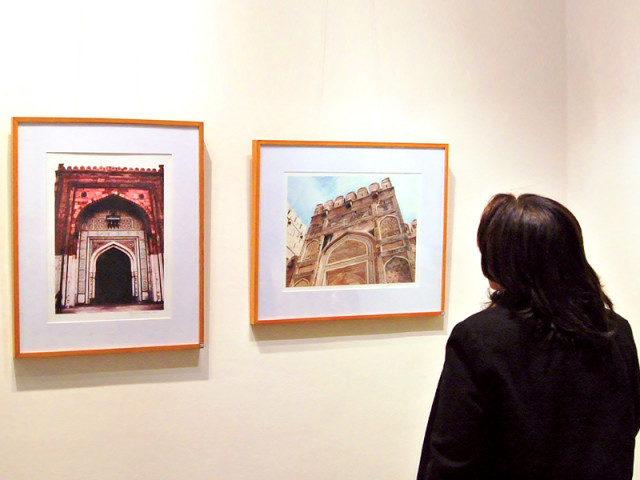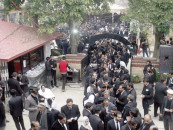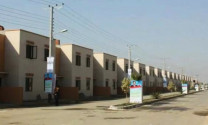Women empowerment: ‘Much has been done, but much is left to do
Art exhibition and discussions held to mark 1982 women’s rights march.

Art for a cause and celebrating women empowerment were the orders of day at Nomad Gallery, where artists, ministers, peace activists and even an acid survivor came together to commemorate National Women’s Day. Saturday’s art exhibition and discussions, backed by the Women Action Forum (WAF), was held to commemorate the historic protest of 12 February 1982, that was held against the ‘anti-women laws’ that were passed by General Ziaul Haq.
Artist Aisha Imdad started off the speeches by introducing all five female artists showcasing their work. She was followed by Naila Farhat, an acid-crime survivor, who recalled her horrific yet inspiring story of becoming an acid victim as a child of 13 and how she braved societal discrimination as she took her case to the Supreme Court demanding justice. Seeing a victim of such a horrendous act left facially scarred yet erect and proud created an immense impact on the audience.
Difficulties in the working environment for women, especially in conservative areas such as Balochistan, were discussed by Public Health Officer Sameela Jaffer as she gave a personal account of the hurdles she faced when working on sanitation projects in Balochistan. Sungi Gender Manager Arifa Mazhar recited a poem by Rehana Taufiq, while Tahira Noor read the demands of NCSW to government pertaining to women rights and equality.
PMLQ member Donya Aziz gave her account of the Anti Women Practices Bill 2008 and her role in pushing the bill forward. “Even though much has been achieved through the passage of various bills protecting women’s rights, there is still much to do,” she said. Khyber-Pakthunkhwa (K-P) was also represented at the event as K-P Social Welfare and Womens Rights Minister Sitara Ayaz spoke of the imbalance of opportunities for men and women in the province and how religion is often used to manipulate the minds and emotions of people. “Some people go and announce whatever they feel like in mosques, using it as a platform to undermine women rights,” she said.
Nomad Gallery Curator Nageen Hayat opened the question and answers round, as members of civil society and others got entrenched in a heated discussion on various topics including rights bills and the situation in Balochistan and K-P. It was then when the civil society members strongly condemned the killings of Bakhtiar Dhomki’s wife and daughter and demanded immediate action. They also proposed that the law of evidence under the Hudood Ordinance be reversed.
Even though the main focus of the event was women empowerment, the artwork of Lala Rukh, Samra Mohsin Khan, Aisha Asim Imdad, Saba Samee and Sabah Hussain also managed to catch the eye of the visitors. Samee and Khan’s photography reflected architecture, especially imperial and Mughal buildings, while Rukh, a well-known landscapist, showcased “nightscapes” featuring minutely detailed night-time scenery. Imdad’s work consisted of traditional images where the artist sought to create a story using mythology. Hussain’s “Saba Veeran”, perhaps the most intriguing work at the exhibit, showcased print making.
Published in The Express Tribune, February 12th, 2012.


















COMMENTS
Comments are moderated and generally will be posted if they are on-topic and not abusive.
For more information, please see our Comments FAQ